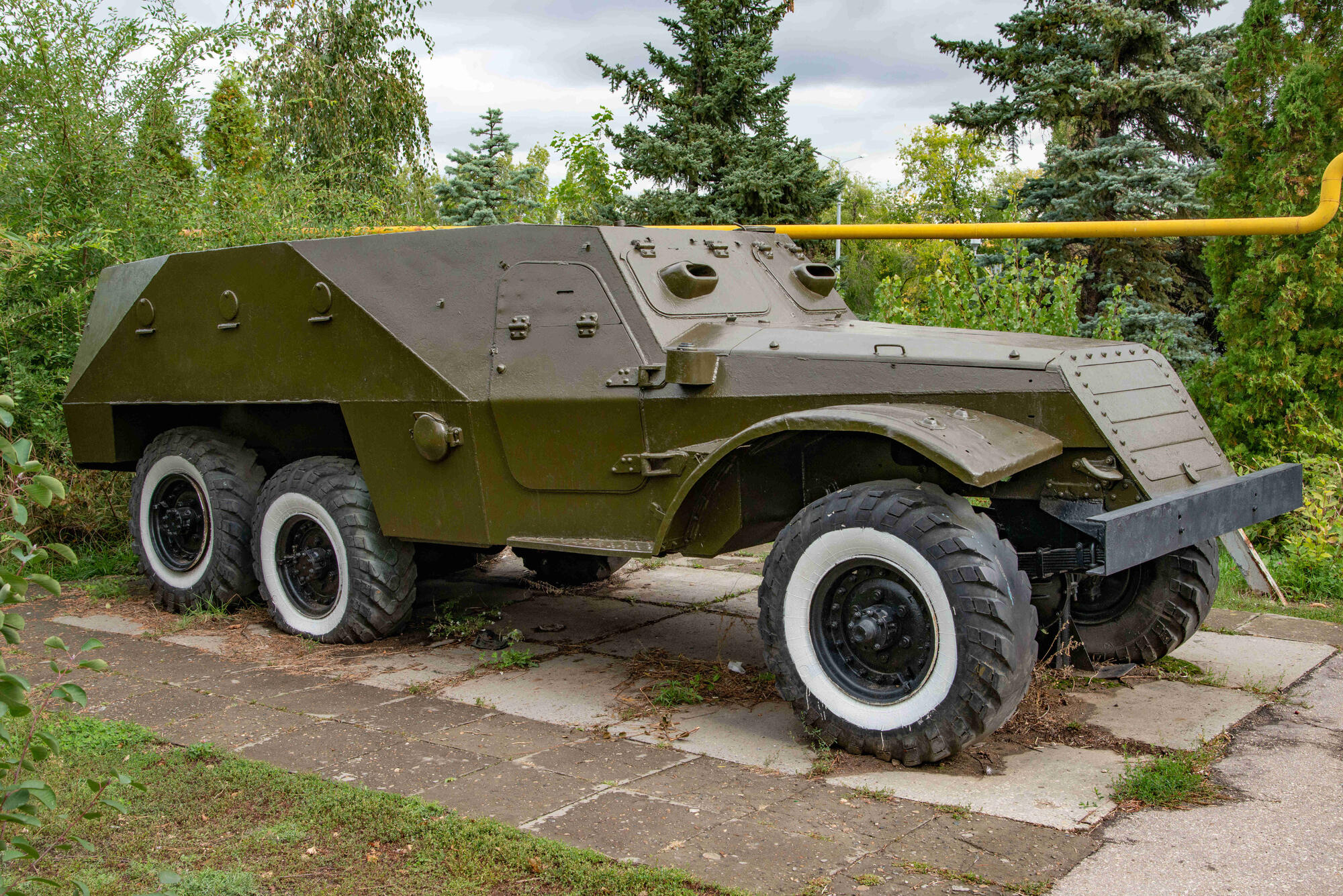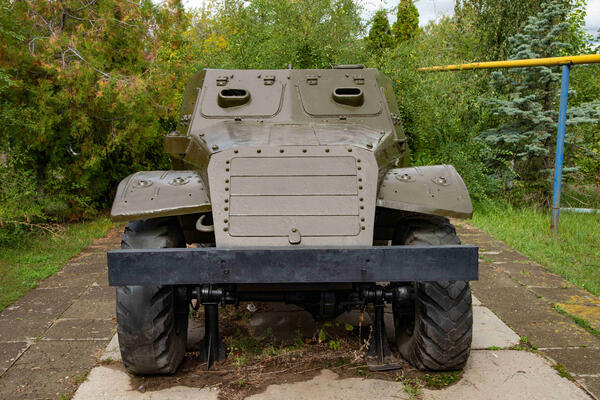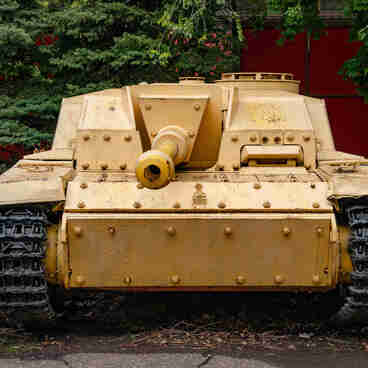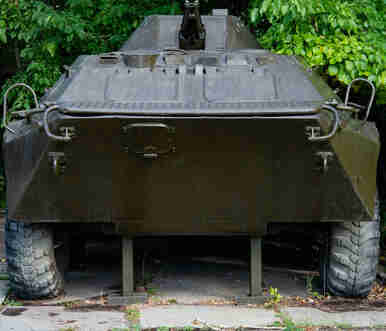The BTR-152 armored personnel carrier (APC) was developed on the basis of the ZIS-151 all-terrain vehicle under the leadership of Boris Mikhailovich Fitterman. The development was carried out by the design bureau of the First State Automobile Plant named after Joseph Stalin. This APC entered service by the Decree of the USSR Council of Ministers on March 24, 1950.
Along with the BTR-40, it became the first mass-produced armored personnel carrier in the USSR. It had a two-person crew. The BTR-152 was used to transport infantry troops — up to 17 people — and as an artillery tractor. It was equipped with a 7.62mm medium machine gun (SG-43 or SGMB), designed by Petr Maximovich Goryunov. The gun was fixed on one of four mounts around the perimeter of the hull.
The BTR-152 armored personnel carrier was frameless, which made it lighter and gave it a shorter ground clearance. The maximum speed on the highway was 75 km/h. The APC had a 110-horsepower engine and a 6×6 configuration. In 1954, it was modernized. The APC was equipped with adjustable tires with a pressure regulation system and a winch.
The motorized rifle units of the Soviet Army were issued with the BTR-152 for the first time in the late 1950. Their production proceeded quickly, as evidenced by the participation of a large number of these vehicles in the parade on November 7, 1951 in Moscow.
The BTR-152s were also delivered to armored units, where they were used as escort and maintenance vehicles. In addition to the Soviet Army, the BTR-152 was used by the border and internal troops.
The BTR-152 began to be exported in the mid-1950s, first of all they were delivered to the armies of the Warsaw Pact members. Until the early 1960s, more than 12 thousand units of all modifications were produced.
As more modern armored personnel carriers entered service with the Soviet Army, these vehicles were transferred from motorized infantry to engineering and chemical troops, as well as to DOSAAF organizations (the Volunteer Society for Cooperation with the Army, Aviation, and Navy; a paramilitary sport organization in the Soviet Union). In the internal military districts, the BTR-152 of the latest modifications were in service until the early 1970s. This armored personnel carrier was retired from active service with the Russian Army in 1993.
Along with the BTR-40, it became the first mass-produced armored personnel carrier in the USSR. It had a two-person crew. The BTR-152 was used to transport infantry troops — up to 17 people — and as an artillery tractor. It was equipped with a 7.62mm medium machine gun (SG-43 or SGMB), designed by Petr Maximovich Goryunov. The gun was fixed on one of four mounts around the perimeter of the hull.
The BTR-152 armored personnel carrier was frameless, which made it lighter and gave it a shorter ground clearance. The maximum speed on the highway was 75 km/h. The APC had a 110-horsepower engine and a 6×6 configuration. In 1954, it was modernized. The APC was equipped with adjustable tires with a pressure regulation system and a winch.
The motorized rifle units of the Soviet Army were issued with the BTR-152 for the first time in the late 1950. Their production proceeded quickly, as evidenced by the participation of a large number of these vehicles in the parade on November 7, 1951 in Moscow.
The BTR-152s were also delivered to armored units, where they were used as escort and maintenance vehicles. In addition to the Soviet Army, the BTR-152 was used by the border and internal troops.
The BTR-152 began to be exported in the mid-1950s, first of all they were delivered to the armies of the Warsaw Pact members. Until the early 1960s, more than 12 thousand units of all modifications were produced.
As more modern armored personnel carriers entered service with the Soviet Army, these vehicles were transferred from motorized infantry to engineering and chemical troops, as well as to DOSAAF organizations (the Volunteer Society for Cooperation with the Army, Aviation, and Navy; a paramilitary sport organization in the Soviet Union). In the internal military districts, the BTR-152 of the latest modifications were in service until the early 1970s. This armored personnel carrier was retired from active service with the Russian Army in 1993.




